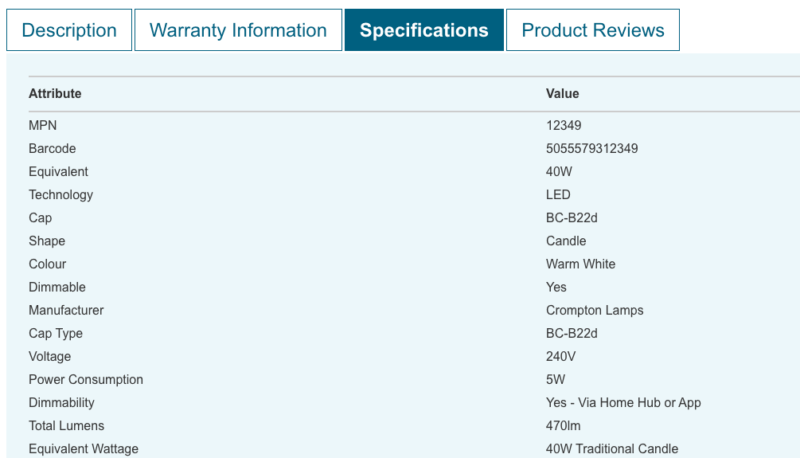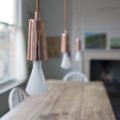Making sense of product specifications.
Alongside each product on our site, you’ll notice important specifications that provide you with information to help you choose the right lightbulb.
Improving customer knowledge about our products is high on our agenda, and, the aim of this blog, is to not only highlight the specification area, but explain and simplify the process of looking for a replacement lightbulb.
So without further ado, here’s a few points for you to consider when sifting through the specification section. It’s far simpler than you might have thought.
Wattage doesn’t always equal brightness
Lightbulbs are rated in watts to show the amount of electricity they’ll lose.
When people search for the same brightness as their old lightbulb, they look at the wattage (which in the case of like-for-like, is correct).
However, if you’re looking to replace a Halogen or Incandescent light with an LED one, it’s somewhat different. The wattage usage in LED lighting does not necessarily indicate the brightness of the old Halogen or Incandescent bulb. The best way when comparing the brightness is to look at the ‘total lumen’ section.
Quite simply – lumens measure how much light you are getting from a bulb. More lumens means a brighter light.
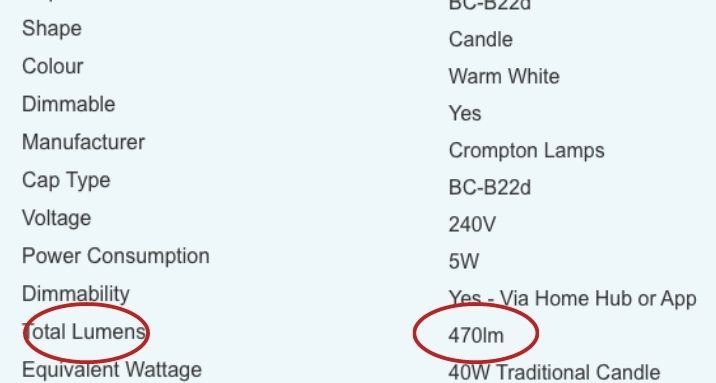
Energy saving
If the customer is looking for energy-saving lighting, then they need to focus on the wattage section of the specification tab. The lower the wattage, the lower the amount of energy that is being used to power the light bulb. Keep in mind the different types of light bulbs and the impact they have on the environment. For example, LED lights are far better for the environment than Halogen or Incandescent ones.
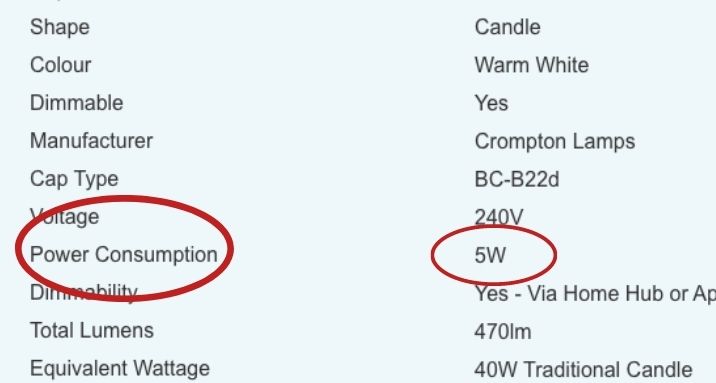
Equivalent wattage
Equivalent wattage is used to help people who are looking at wattage to find light bulb of the same or similar brightness. There is some complexity to this though, for example, a 6W LED light bulb can produce the same level of brightness as a 60W filament light bulb, and so the two are now no longer even remotely comparable.
For a more comprehensive explanation, head over to our east to follow guide
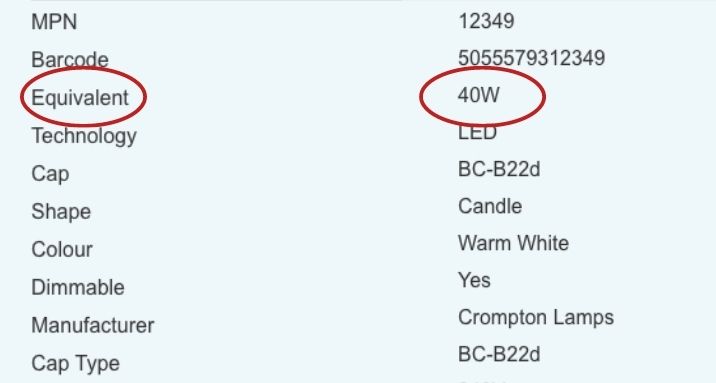
If the Cap fits…
When buying a replacement light bulb it’s necessary to match the cap type of the old lightbulb to the new one – and it’s really as simple as that. Our article on what the different types of light bulb fittings, caps and bases are, should also help.
Shape
Light bulbs come in all different shapes and sizes and the model you currently use may not be the only option you have when it comes to shape. The shape of your light can help define your living or working space, so make sure you do enough research and get the best shape for you.
Colour
If you want to know the difference between warm white, cool white and colour temperature, head over to our specialist blog on the subject which has all the answers. It also provides you with details about your existing light bulbs so is worthwhile reading especially if you are considering a complete change of lighting.
Dimmable options
When considering LED lighting the first thing to remember is to check that the LED dimmers are compatible with LED light bulbs. To help understand everything you need to know about the dimming process, our expert blog on the subject provides the complete run-down.
If you’d like to discuss any of the points raised in this blog, then get in touch with a member of our specialist team today. We’d love to hear from you.

